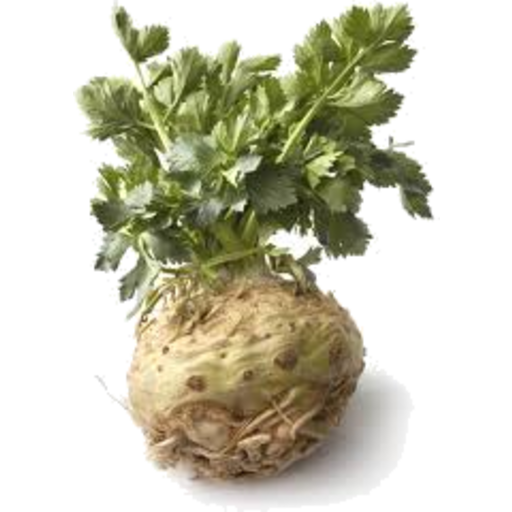Description
Celeriac is a special variety of celery that is cultivated specifically for its large, robust, and rather ugly root. The root vegetable has a number of aliases, including knob celery, turnip rooted celery, or just celery root. There are a number of raw and cooked uses for it, and it is an enduring favorite in European cuisine. Outside of Europe, celeriac can sometimes be difficult to find, but open-minded greengrocers may carry it. It can also be grown in any garden where celery will thrive.
The history of the plant is quite long. Celery has been cultivated as an edible plant for thousands of years, and Mediterranean gardens began to breed a form of celeriac hundreds of years ago. In the Middle Ages, it spread from the Mediterranean, finding its way into Northern European cuisine. Asian cooks also use the vegetable, which is considered to be a varietal within the celery species, Apium graveolens. French cuisine in particular has a number of uses for it, and it appears in salads, soups, and other dishes as a star ingredient or a garnish.
The growing period for celeriac is long, and the roots can take up to 200 days to fully mature. When mature, the portion of the plant that grows above the ground looks much like common celery, with an assortment of stalks arranged around a central point on the root. When harvested, the knobby root with trailing threads of roots is revealed. The root has a slightly spicy flavor that reminds many people of parsley and celery, unsurprisingly, since these plants are close relatives.
Once peeled, celeriac is creamy white and crisp inside. Some cooks use it raw, and it is popular grated in a salad. Since the root tends to discolor as is oxidizes, many cooks briefly soak it in acidulated water (water with an acid added) or marinate it in lemon juice. Celeriac can also be cooked, and is generally treated like other root vegetables.

